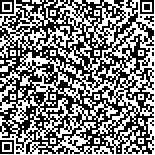| This Article Has Been:Browse 1994 Times Download 2507 Times |

Scan Up The Code! |
| 风道结构对地板下送风型数据中心气流组织的影响(2)实验验证 |
|
胡雨1, 耿云1, 张忠斌2, 张萌1, 姚喻晨1, 黄虎1, 黄毅3, 蒋赟昱3
|
|
|
| (1.南京师范大学能源与机械工程学院 江苏省能源系统过程转化与减排技术工程实验室;2.南京师范大学能源与机械工程学院 江苏省能源系统过程转化与减排技术工程实验室,江苏省邮电规划设计院有限责任公司;3.江苏省邮电规划设计院有限责任公司) |
|
| 摘要: |
| 为研究数据中心合理的气流组织,使服务器运行环境更加安全可靠,本文在数值设计的基础上,以数据中心奇数列子模块为实测对象,通过对比机柜前门送风速度及温度两个关键参数,改变地板穿孔率和挡板角度,验证了包含最优模型在内的6组模型。实测与模拟速度相对误差最大为17%,温度相对误差最大为5%,实测与模拟的速度场、温度场吻合。结合该数据中心热流密度与能耗水平,改变机房冷却系统送风温度工况条件,对比分析各送风温度工况下的实测温度场,并采用回风温度指数(RTI)评价指标加以评析,得出合理送风温度范围为16~19 ℃,为地板下送风型数据中心的设计提供参考。 |
| 关键词: 数据中心 风道结构 实验验证 送风温度 回风温度指数(RTI) |
| DOI: |
| Received:March 01, 2017 |
| 基金项目:江苏省教育厅高校自然科学基金(15KJD470001)和江苏省研究生实践创新计划(SJCX17_0341)项目资助。 |
|
| Effect of Air Duct Layout on the Airflow in Data Center Using Under-floor Air Distribution (2) Experimental Verification |
|
|
|
| Abstract: |
| The huge amount of energy consumed in data centers has prompted researchers to continue studying how to improve their energy efficiency, and according to a US Environmental Protection Agency report, the energy consumption in data centers is doubling every five years; in contrast, the energy consumption in data centers in China have a growth rate significantly higher than the average level globally. Improving the efficiency of the refrigeration system and optimizing the data center airflow pattern will minimize the energy consumption. This paper is the second part of an investigation aiming to find a more satisfying airflow pattern in a data center and to help provide servers with a safer and more reliable operating environment. Based on the simulation described in Part I, the optimal model, including six groups of duct structures, is verified. The odd-numbered sub-modules of the data center were taken as the measured objects, changing the perforation rate of the floor, and the angle of the baffle, to obtain the six groups of reasonable airflow patterns. A comparison of the two key parameters of the front door air supply, namely, the speed and temperature, proves the reliability of the simulated airflow. The maximum relative deviation between the measured and simulated velocity is 17%, and the maximum relative deviation of temperature is 5%, which shows that the simulated temperature and velocity fields are in agreement with the measurement. Concerning the data center heat flux density and energy consumption, the air supply conditions of the cooling system are changed to achieve a comparative analysis of the temperature field under various working conditions. The return air temperature index (RTI) is employed as an evaluation indicator to find that the recommended air supply temperature range, which is 16–19 ℃. The results of this investigation can provide reference for the design of a data center using an under-floor air distribution. |
| Key words: data center air duct layout experimental verification air-supply temperature return temperature index(RTI) |


